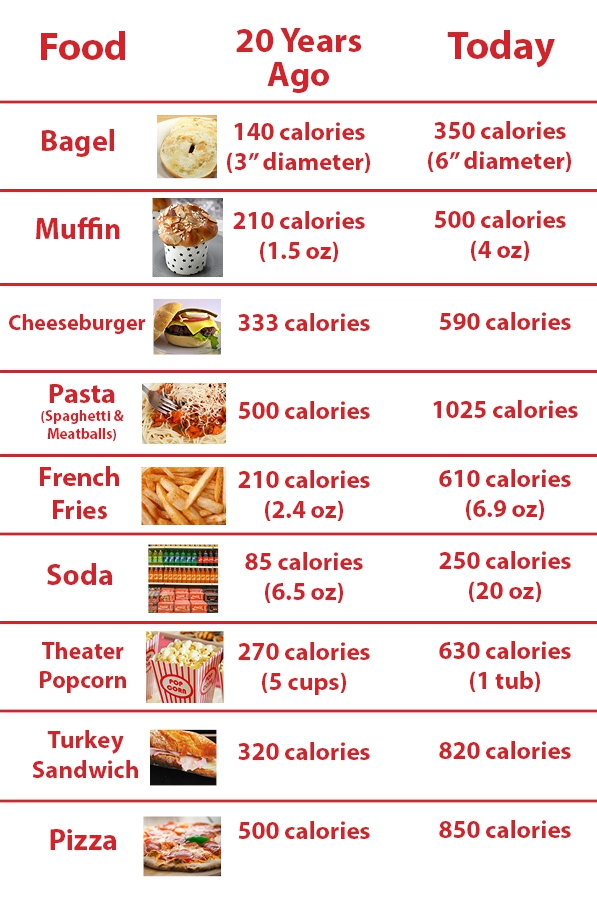Portion sizes of the foods we eat have grown bigger over the past twenty years, both inside and outside of the home. Research has shown that the average hamburger has expanded by 23 percent, soda drinks have increased by 52 percent and what used to be a serving size for a bagel, which is about the size of a hockey puck, is now considered a mini bagel! Even our dinner plates have grown larger by a whopping 23%.
The average dinner plate was once 9.6 inches, today the average plate clocks in at approximately 11.8 inches. This may not sound like much, but when served with a bigger plate, we will put more plate on that food, losing sight of what an appropriate portion size actually looks like. So, what is an actual portion? Portion distortion has made it very difficult to determine. The chart below summarizes how much a portion has changed over the past two decades:
To give us an idea of what portion sizes should look like, the USDA has written guidelines that show how much of each food counts as a serving.
– One serving of grains could equal 1 slice of bread, 1 cup of cold cereal or ½ cup cooked pasta or oatmeal.
– One serving of fruit looks like 1 cup of berries, ¼ cup of dried fruit or a medium apple, which is about the size of a baseball.
– One serving of vegetables is considered to be 1 cup of raw or cooked vegetables or 2 cups of raw leafy vegetables
– A serving of protein is considered to be 3 ounces of cooked lean meat, poultry or fish; which is about the size of a deck of cards, 1 egg or 2 egg whites, ¼ cup cooked beans, 1 Tablespoon of nut butter, or ½ ounce of nuts or seeds
– A serving of dairy is 1 cup of milk or milk substitute, 1 cup of yogurt, 1 ½ ounce of cheese

To see how many servings of each food group you need per day for your age, gender, and activity level, visit MyPlate Plan | MyPlate. This knowledge will help you to determine how big your portion sizes should be at each meal. You may be surprised at what an actual serving of your favorite food looks like. Knowing the standard serving sizes of foods that you typically eat can help you to develop an awareness of how much you should be eating. If you would like more help with personalizing your nutrient recommendations, contact the dietitians at Waverley Oaks at nutrition@waverleyoaks.com.
Content submitted by Janyce Gately – MS, RD, LDN, CHWC
